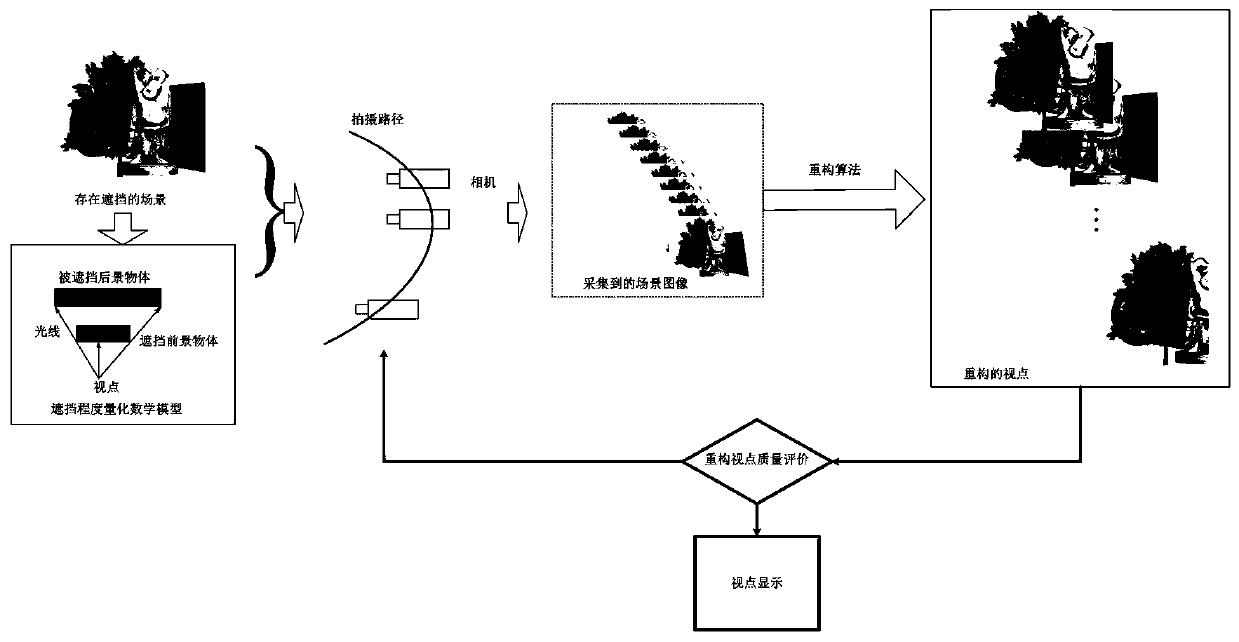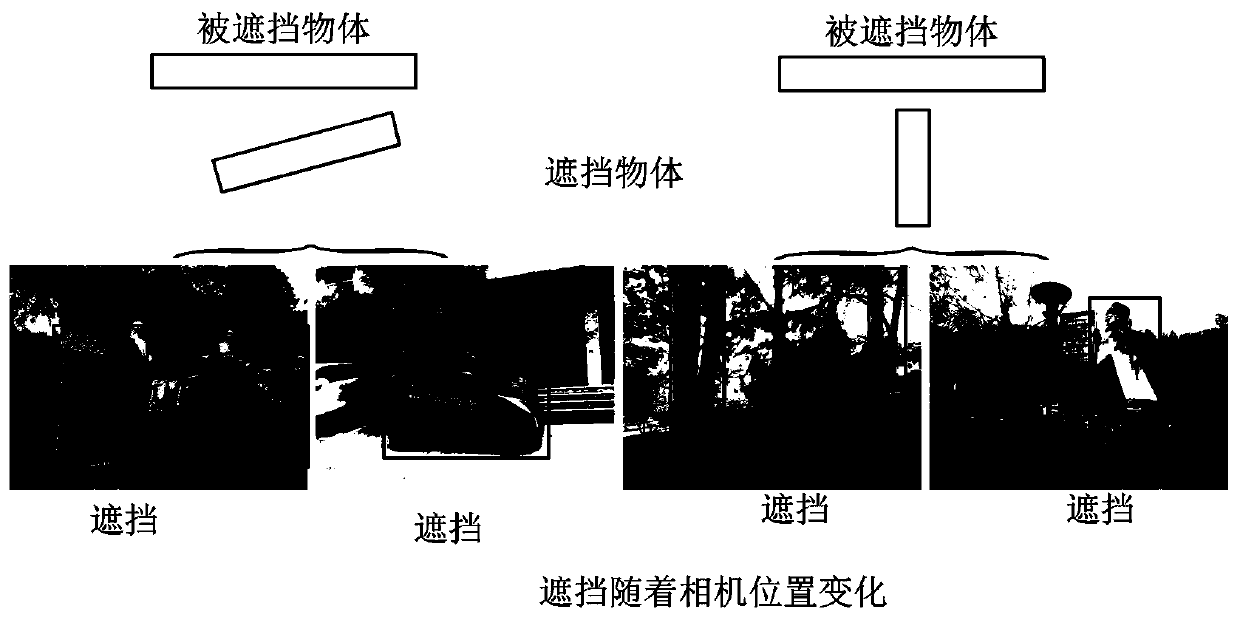Method for reducing reconstruction distortion degree of viewpoint in light field drawing
A distortion degree and viewpoint technology, which is applied in the field of reducing the reconstruction distortion degree of viewpoints, can solve the problems of extremely complex changes in occlusion phenomena, difficult mathematical quantification modeling of occlusion phenomena, and no rules to follow, etc., so as to improve the quality of viewpoint rendering and improve the Effects of interactivity and stereoscopic experience
- Summary
- Abstract
- Description
- Claims
- Application Information
AI Technical Summary
Problems solved by technology
Method used
Image
Examples
Embodiment 1
[0046] refer to figure 1 , a method for reducing the reconstruction distortion of a viewpoint applied in light field rendering, comprising the following steps:
[0047] 1) Construct a 3D scene with occlusion: Use 3dMAX to construct a 3D scene with foreground objects and background objects. The foreground objects partially block the background objects visually, thereby causing background objects to appear during the scene information capture process The lack of partially occluded edge information, such as figure 2 The Buddha statue in the foreground blocks the trees in the background. In a 3D scene with occlusion, a set of cameras is used to shoot the scene at different positions to obtain a set of multi-viewpoint images of the scene. Since the scene will be occluded, when using the camera In the process of shooting scenes at different locations, there will always be large differences in the captured information, and even some key information is missing. Therefore, the phenom...
Embodiment 2
[0067] The occlusion mathematical model in Embodiment 1 can be applied to fields involving stereoscopic information capture and rendering, especially computational imaging, computational vision and virtual reality, etc. This example is an example of applying the occlusion model in Embodiment 1 to light field sampling The application, first, determines the optimal depth of view for the camera using the formula:
[0068]
[0069] Then, the occlusion quantization model in Example 1 can be applied to the calculation of the light field sampling rate, that is, the calculation of the sampling interval of (t, v), where t is used to represent the position of the camera,
[0070] For a given 2D light field p(t,v), its Fourier transform can be written as:
[0071]
[0072] Here ω t ,ω v are the frequencies along the camera position axis t and the imaging plane axis v, respectively. Based on the occlusion mathematical model in Embodiment 1, the ray expression considering the occlu...
PUM
 Login to View More
Login to View More Abstract
Description
Claims
Application Information
 Login to View More
Login to View More - R&D
- Intellectual Property
- Life Sciences
- Materials
- Tech Scout
- Unparalleled Data Quality
- Higher Quality Content
- 60% Fewer Hallucinations
Browse by: Latest US Patents, China's latest patents, Technical Efficacy Thesaurus, Application Domain, Technology Topic, Popular Technical Reports.
© 2025 PatSnap. All rights reserved.Legal|Privacy policy|Modern Slavery Act Transparency Statement|Sitemap|About US| Contact US: help@patsnap.com



